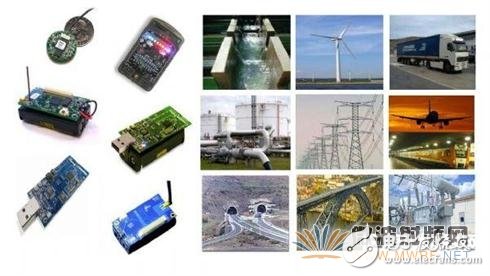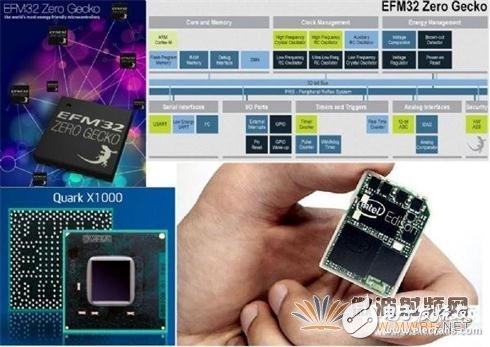Wireless sensor networks (WSN) have become a trend in the areas of public facilities, climate monitoring, and large-scale factories and warehouses. Its success or failure lies in the cost of sensors, the number of nodes deployed, and the long-term operating life requirements of the replacement battery for at least 3 to 20 years, from the use of low-power MCUs, wireless communication technologies to energy harvesting (Energy HarvesTIng) Technology is the key to the long-term success of this wireless sensing network.
Wireless sensor technology for environmental sensing, intelligent controlSensing technology is on the first floor of the automation domain architecture
Wireless Sensors can be deployed in public facilities that are difficult to access and repair (such as elevated roads and bridges), or in hillsides, forests, oceans, lakes, etc., without the need for wires; when sensing nodes (Sensor) Node) senses changes in ambient light, temperature, humidity, pressure, magnetic force, vibration, current, etc., and transmits these measured changes wirelessly through the relay station or directly back to the central control server. There may be dozens, hundreds or even thousands of wireless sensing points in the entire sensing area to form a vast Wireless Sensor Network (WSN). The eTag electronic toll officially operated at the end of 2013 is an example of a wireless sensing application in which eTag RFID tags are attached to each vehicle and passed through the eTag sensor mast of the national highway.

In industrial control applications of enterprises and large-scale factory warehouses, such as the plant equipment of the plant, the monitoring points such as temperature, voltage, and motor speed are set, and only a few dozen bytes are transmitted to the control panel within a certain time interval, so that the machine can be effectively grasped. The condition of the equipment. The deployment of wireless sensors simplifies the routing process and effectively reduces the cost of laying and managing the entire sensing network. As for the intelligent home control, various sensing components developed by MEMS micro-electromechanical technology can be compact and low-cost, and open up the possibility of wireless sensing technology application. From the early Nintendo Wii's somatosensory control, the protection of laptop hard drive vibration detection, to the application of smart phones from your hands and hands, Accelerometers for tablets, Gyrometers, etc.

Each CPU/MCU factory has launched ultra-low-power MCUs to seize huge IoT/WSN/ wearable device opportunities (SiliconLab/Intel)
In recent years, domestic and foreign research units have invested in many resources to develop application services for wireless sensing networks, covering commercial, entertainment, military, medical, and educational fields.
Wireless sensing technology, low power, ultra long-term power supply is the keyA wireless sensor in the hardware architecture, including: 1. MCU microcontroller, usually embedded firmware, responsible for performing sensing data acquisition and calculation. 2. The power supply unit, such as a lithium battery, or a solar energy, piezoelectric switch (Piezo Switch), or an environmental energy harvesting (Energy HarvesTIng) design that can generate power by means of environmental magnetic and radio waves. 3. One to many sensing units, such as changes in light, temperature, humidity, pressure, magnetic force, vibration, current, etc. MEMS microcomputer inductance measuring components are usually used. 4. RF Transceiver, usually applied to RFID chips such as RFID or other low-power ZigBee, Bluetooth medium and low-rate wireless transmission technology, and closes after transmitting a small amount of measurement data packets. Save power; pass to the wireless sensing relay (Hub) collection before transferring to a higher speed Wi-Fi 802.11a/b/g/n or 3G/3.5G mode to the central server.
Since the maximum cost of wireless sensors is CPU/MCU and RF radio units, wireless sensor manufacturers are integrated and intensive by advanced semiconductor and packaging process MCP and even SoC. At present, the size of the wireless sensor can be only one coin size, and the 802.11a/b/g/n Wi-Fi wireless relay transmission node is almost the same size as a USB flash drive and a chewing gum.
Secondly, it is like a crater, a cold zone, a lake or an elevated road bridge. Because it is difficult to contact and maintenance is not easy, in order to reduce the maintenance cost of installation and frequent replacement of batteries, the wireless sensing points arranged at these locations The specification is required to run only for 3 to 20 years with battery, and even have the ability to collect energy energy (Energy HarvesTIng), that is, the way to use solar energy, piezoelectric switches, magnetic force, vibration, and even extract environmental wireless signals. It can generate weak power and make the entire wireless sensor work. According to IDTechEx, the number of sensing devices with environmental power will reach 10 billion by 2019, 20 times that of 500 million in 2009.
If each wireless sensing node frequently uploads the measurement signal as soon as it is rushing, the huge measurement data upload will cause the bandwidth and energy consumption of the entire wireless sensing network. Local Processing has become a new trend in the design of next-generation wireless sensors. Usually, the wireless sensor MCU and RF are in the sleep energy-saving mode. When a certain measurement signal appears, the MCU is first turned on. After the data is easily judged and confirmed, the RF unit is quickly turned on to transmit the data, then the RF and MCU are turned off, and the energy-saving mode is returned. In addition, the over-the-air (OTA) design makes it easy to update firmware of the vast majority of sensors by transmitting firmware data remotely.
At the same time, whether to choose an industry-standard open MCU, a rich and diversified third-party software and hardware development kit and software development tools, make the development of wireless sensing creative applications without any restrictions. For example, Silicon Labs chose the 8051 single chip from the early stage and switched to the ETM32 Zero Gecko of the Cortex M0/M0+ architecture from ARM (in recent years) as a Wireless Sensor MCU, which can be used with various temperatures, humidity and environment. Light source, motion detector, switch door detection, position detection, chemical synthesis, smoke detectors, etc. Its wireless sensor built-in lithium battery can supply power for dozens of hours without sunlight. When it is equipped with solar photovoltaic panel, it only takes 3~5 hours for general sunshine to be charged. If it is equipped with piezoelectric, vibration or other environment, it can be charged. The way, supplemented by a long-lasting lithium battery, there is no need to replace the battery in almost 10 to 20 years.
Based on the x86 architecture, Intel rebuilt the 22nm process and 400MHz Quark processor. At the CES 2014, it opened the first dual-core computer platform Edison with SD card size. It has built-in Wi-Fi and Bluetooth RF modules. To seize the Internet of Things, wireless sensing and wearable device opportunities, and to hold a total award of $ 1.3 million in development application awards to attract developers of creative applications.
Wireless sensing to introduce home control and wearable devicesFrom applications such as early smoke sensors, gas sensors, glass windows to invading sensors, to recent environmental settings such as early to recent LED fixtures, light source brightness settings, and automatic opening and closing of electric curtains, NXP published Using Piezo's wireless switch, pressing the switch produces an internal RF chip that transmits the signal to a wireless LED fixture that supports ZigBee.
Wireless sensing technology is also further embedded in the application of home office automation. By deploying various temperature, light source, pressure wireless sensors, and wireless ZigBee switch control, through the cloud mode, the user can monitor by mobile phone or tablet, and further realize the automation application of imaging light, curtain, air conditioner, etc. . At present, there are already second-generation houses built by Farglory, the future city of Linkou, and the construction of new towns in Danhai. They all adopt some home appliance automation control schemes that use wireless ZigBee cloud control.
Chang Gung University and the sports university and fitness center collect the physiological parameters and sports data of the elderly. Plan the sports equipment and sports mode that suits him. Connect with the fitness equipment with wireless sensing network (WSN), let the fitness equipment detect, recommend which mode to use to exercise, and inform the amount of exercise. At the same time, in 2008, they developed a smart clothing that integrates ECG, breathing, body fluids, temperature and movement acceleration. It can monitor records 24 hours a day, anywhere, and browse records through mobile phones or computers. The next goal is to work with the ICT industry to introduce and integrate various wireless sensing technologies into a variety of wearable devices that are attached to the body (On Body), allowing current medical care to be extended from the hospital to the elderly. From the institution to the home care of the general community.
When you think of the screen protectors of old, you're probably thinking of TPU. It's a flexible plastic that's a huge hassle to install . it's flexible, so it can go edge-to-edge on any phone, it has better impact protection than PET, and it has limited "self-healing" powers for small scratches. Brands like TUOLI offer TPU at very affordable prices,
On the other hand, TUOLI's comes in a few different styles depending on the look, feel, and features you want.
Tpu Screen Protector,Hydrogel Protective Film,Mobile Phone Screen Protector,Tpu Hydrogel Film,hydrogel protector, hydrogel sheet
Shenzhen TUOLI Electronic Technology Co., Ltd. , https://www.szhydrogelprotector.com